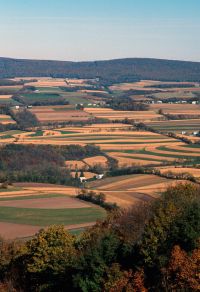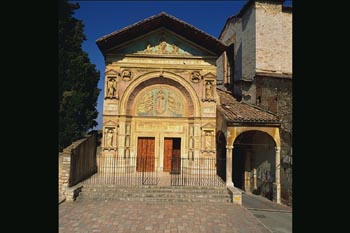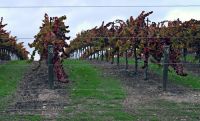|
Perugia is small, a miniature chief town, with only 153.000 citizens. Also the region is rather small with an area of only 8400 sq/km: a real jewel in the middle of Italy, far from the sea and with a morphology made of small mountains and sweet hills.
 Perugia stands on one of these hills: the ancient nucleus is surrounded by the Etruscan walls and still in very good state and stands on the top of the hill. The subsequent urban installations develop along 3 small valleys on the hillside. Perugia stands on one of these hills: the ancient nucleus is surrounded by the Etruscan walls and still in very good state and stands on the top of the hill. The subsequent urban installations develop along 3 small valleys on the hillside.
Perugia was founded by the Etruscan in the IV century A.C. Some times allied, some times hostile to the roman power the town was finally conquered by Ottaviano in the 40 A.D. and then rebuilt by Augusto remained a roman town till the end of the Roman Empire. In the year 548 A.D. was invaded by the barbarians (the Goths) and then declared a Duchy By the Longobardians. After the year 1000 A.D. became a Comune ( state town ) and established very good relations either with the papacy and with the Empire being entitled to appoint own consuls and being papal seat for several years. During this period the town knew a big growth and the town-walls were enlarged and many new churches were built ( also the wonderful cathedral ).
On the half of the 14th century the Pope Urbano V, back from Avignone, gave the full power to the Abbot of Cluny. His power lasted few years. Later Perugia was governed by many lordships till 1531, when Pope Paul III founded the papal state. Perugia was under this rule till 1859. In the year 1860 they declared themselves e free state and finally, in the same year, the bersaglieri of King Vittorio Emanuele II entered in the city unifying it to Italy. Since few decennia the town developing again with the building of new quarters on the slopes of the hills. Unfortunately a big earthquake in 1977 caused many victims and damages to the historical and the artistic patrimony. The Umbrian people has rebuilt and restored with tenacity and patience what misfortune did destroy. To visit the big quantity of monuments, churches, museums and picturesque landscapes quite a long time is necessary.
 The best start for a visit is the historical center from the top of the hill: from the ‘Arco Etrusco’, on the northern part of the city-wall and then towards the south along the Cesare Battisti street till Piazza Cavallotti, where you can admire an evocative archaeological area with monuments between the III and XV century. From here you can reach IV November Square where the cathedral of Saint Laurence stands. In the middle you can see the ‘Fontana Maggiore’ in front of the ‘Palazzo dei Priori’. Inside the cathedral there is the Capitolare Museum and inside the ‘Palazzo dei Priori’ you find the National Gallery of Umbria. Take a walk along Vannucci street, there you can make an exclusive shopping and admire Palazzo Donini, seat of the Umbrian Regional Administration, and then piazza Italia and the Carducci Gardens: from here you have a wonderful view of the town environs. The best start for a visit is the historical center from the top of the hill: from the ‘Arco Etrusco’, on the northern part of the city-wall and then towards the south along the Cesare Battisti street till Piazza Cavallotti, where you can admire an evocative archaeological area with monuments between the III and XV century. From here you can reach IV November Square where the cathedral of Saint Laurence stands. In the middle you can see the ‘Fontana Maggiore’ in front of the ‘Palazzo dei Priori’. Inside the cathedral there is the Capitolare Museum and inside the ‘Palazzo dei Priori’ you find the National Gallery of Umbria. Take a walk along Vannucci street, there you can make an exclusive shopping and admire Palazzo Donini, seat of the Umbrian Regional Administration, and then piazza Italia and the Carducci Gardens: from here you have a wonderful view of the town environs.
Taking Marzia street you reach ‘Porta Marzia’ , entry to the dungeons of the ‘Rocca Paolina’ (ruins of a castle). Going on you arrive to the Saint Ercolano Church and following Cavour Ave. you reach the National Archeological Museum of Umbria, architecturally melted with the magnificent Saint Domenico Church.
From Perugia you can easily reach other beautiful and famous small towns such as Assisi, Gubbio, Città di Castello, Spoleto, Foligno, Città della Pieve , Bevagna, Umbertide and…the list could never end. Any town is a coffer full of art, culture, archaeological treasures and traditions.
The rich and wonderful nature, sweet and incontaminate, embraces the farm-houses surrounded by a real whirling of colours and perfumes.
 All this wonder is the forewarn of the oenological and gastronomical products that this generous land gives you in handfuls: consistent red wines ( Torgiano rosso riserva, Sangiovese, Montefalco Sagrantino) fresh white wines (Trebbiano, Sauvignon), extra quality olive oil (extravergine a Denominazione d’Origine Protetta) any kind of salami and sausages, black truffle of Norcia, white truffle of Città di Castello, many kinds of typical cheeses, fish from the lake Trasimeno and the several rivers, honey, cereals, saffron, game (wild boar, roe-buck, wingeds) and delicious cakes and candies. All this wonder is the forewarn of the oenological and gastronomical products that this generous land gives you in handfuls: consistent red wines ( Torgiano rosso riserva, Sangiovese, Montefalco Sagrantino) fresh white wines (Trebbiano, Sauvignon), extra quality olive oil (extravergine a Denominazione d’Origine Protetta) any kind of salami and sausages, black truffle of Norcia, white truffle of Città di Castello, many kinds of typical cheeses, fish from the lake Trasimeno and the several rivers, honey, cereals, saffron, game (wild boar, roe-buck, wingeds) and delicious cakes and candies. |



 Munch: The Scream Within
Munch: The Scream Within In the garden
In the garden Perugia Travel Guide
Perugia Travel Guide


 Perugia stands on one of these hills: the ancient nucleus is surrounded by the Etruscan walls and still in very good state and stands on the top of the hill. The subsequent urban installations develop along 3 small valleys on the hillside.
Perugia stands on one of these hills: the ancient nucleus is surrounded by the Etruscan walls and still in very good state and stands on the top of the hill. The subsequent urban installations develop along 3 small valleys on the hillside. The best start for a visit is the historical center from the top of the hill: from the ‘Arco Etrusco’, on the northern part of the city-wall and then towards the south along the Cesare Battisti street till Piazza Cavallotti, where you can admire an evocative archaeological area with monuments between the III and XV century. From here you can reach IV November Square where the
The best start for a visit is the historical center from the top of the hill: from the ‘Arco Etrusco’, on the northern part of the city-wall and then towards the south along the Cesare Battisti street till Piazza Cavallotti, where you can admire an evocative archaeological area with monuments between the III and XV century. From here you can reach IV November Square where the  All this wonder is the forewarn of the oenological and gastronomical products that this generous land gives you in handfuls: consistent red wines ( Torgiano rosso riserva, Sangiovese, Montefalco Sagrantino) fresh white wines (Trebbiano, Sauvignon), extra quality olive oil (extravergine a Denominazione d’Origine Protetta) any kind of salami and sausages, black truffle of Norcia, white truffle of Città di Castello, many kinds of typical cheeses, fish from the lake Trasimeno and the several rivers, honey, cereals, saffron, game (wild boar, roe-buck, wingeds) and delicious cakes and candies.
All this wonder is the forewarn of the oenological and gastronomical products that this generous land gives you in handfuls: consistent red wines ( Torgiano rosso riserva, Sangiovese, Montefalco Sagrantino) fresh white wines (Trebbiano, Sauvignon), extra quality olive oil (extravergine a Denominazione d’Origine Protetta) any kind of salami and sausages, black truffle of Norcia, white truffle of Città di Castello, many kinds of typical cheeses, fish from the lake Trasimeno and the several rivers, honey, cereals, saffron, game (wild boar, roe-buck, wingeds) and delicious cakes and candies.